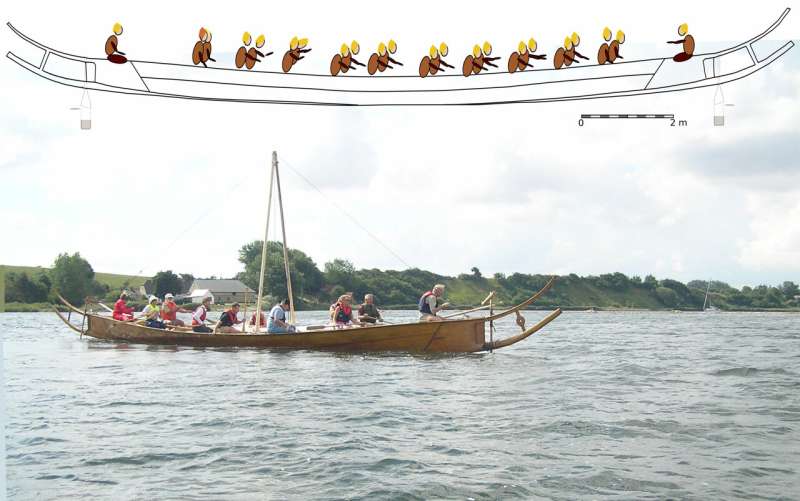People living in Bronze Age-era Denmark may have been able to travel to Norway directly over the open sea, according to a study published in PLOS One by Boel Bengtsson from the University of Gothenburg, Sweden, and colleagues. To complete this study, the research team developed a new computer modeling tool that could help other scientists better understand how ancient peoples traversed the sea.
The Bronze Age cultures of what are now northern Denmark and southwestern Norway are quite alike, with similar artifacts, burial systems, and architecture. Cultural exchange between the two regions was likely made possible by vessels traveling along the coastlines of Scandinavia, following a 700-kilometer route across Denmark, up the coast of Sweden and back down to southwestern Norway.
However, the researchers of this new paper suggest, the cultural similarities between these two regions invite speculation that ancient people may also have traveled directly between the two sites—over more than 100 kilometers of open ocean.
To study this possibility, the research team developed a modeling program that uses data on environmental factors like currents and wind, along with data on how a vessel moves through the water, to simulate different trips. For this study, the team simulated trips using a reconstruction of the Hjortspring boat, a large paddle-driven canoe from around 350 BCE.
According to their simulations, Bronze Age people may have had the capability to travel directly from Denmark to Norway over the open ocean, though these trips would likely have required a boat able to navigate in waves up to 1 meter high and winds of up to 10 knots, along with good weather forecasting and navigational skills. These open-sea voyages may also have been limited to the summer months.
In contrast, following the longer route between the two sites along the coastline was likely safer and possible all year, but probably would have taken many weeks to complete and required frequent stops to restock supplies.
In addition to these insights into Bronze Age Scandinavian crossings, the authors note that their model could be adapted to study seafaring for any vessel with sufficient information about its hull shape and specifications.
The authors add, “These new agent-based simulations, applied with boat performance data of a Scandinavian Bronze Age-type boat, demonstrate regular open sea crossings of the Skagerrak, including some 50 km of no visible land, likely commenced by 2300 BC, as indicated by archaeological evidence.”
More information:
Seafaring and navigation in the Nordic Bronze Age: The application of an ocean voyage tool and boat performance data for comparing direct open water crossings with sheltered coastal routes, PLOS One (2025). DOI: 10.1371/journal.pone.0320791. plos.io/4iEg5qV
Provided by
Public Library of Science
Citation:
New computer model reveals how Bronze Age Scandinavians could have crossed the sea (2025, April 2)
retrieved 2 April 2025
from https://phys.org/news/2025-04-reveals-bronze-age-scandinavians-sea.html
This document is subject to copyright. Apart from any fair dealing for the purpose of private study or research, no
part may be reproduced without the written permission. The content is provided for information purposes only.

